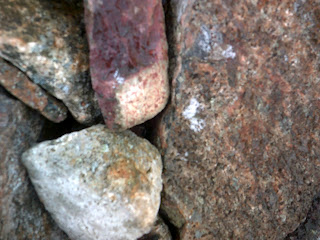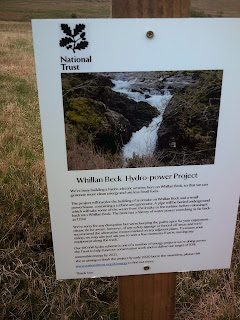After posting about granophyre, I then read that the hill fort on the summit of Carrock Fell is made of granophyre boulders, according to my geology walks book. Here is a glorious example, the pink of the rock enhanced by sunset. I looked up the GCR sheet on the subject and found this http://jncc.defra.gov.uk/pdf/gcrdb/GCRsiteaccount295.pdf This document calls it "microgranite". I am still trying to find out if microgranite is another name for granophyre. Microgranite would imply smaller crystals so faster cooling which would occur closer to the surface. I climbed up to the summit cairn unsure of where the wall of the fort lay.


There I looked back and saw the gateway below and the tumbled down ramparts. The rock photographed was actually part of the wall! I'd climbed over it.
































